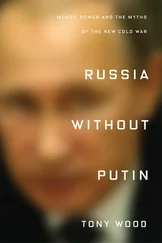Concerned that Euroclear would give Morgan Guaranty key insights into its competitors' activities, a group of Luxembourg and foreign banks established Cedel in Luxembourg in September 1970. Bitter competition and rivalry between Euroclear and Cedel would serve to drive down settlement fees further, much to the benefit of customers.
To allay the competitive concerns, Morgan Guaranty sold Euroclear to its users in 1972, though it continued to profit from providing credit to Euroclear's customers until Euroclear set up its own bank in 2000. Cedel was fully acquired by Deutsche Börse in 2002 and is now known as Clearstream.
Meanwhile, to deal with the continuing paper jam in the US market, the New York Stock Exchange (NYSE), the American Stock Exchange and the National Association of Securities Dealers (NASD) cooperated to set up The Depository Trust Company (DTC) in 1973. John M. Meyer Jr., who served as chairman of Morgan Guaranty from 1969 to 1971, was again an instrumental influence behind this development.
In a contemporaneous and not-entirely-unrelated development, 239 banks from 15 countries began cooperating to establish the Society for Worldwide Interbank Financial Telecommunication (SWIFT) in 1973. SWIFT is a not-for-profit cooperative that was founded to standardise payment instructions between financial institutions. Up until SWIFT's launch in 1977, payment instructions between banks had been communicated via telex. Often, it would require up to 10 messages back and forward in order to effect a single transaction. The problem was that message formats differed between institutions, making the system costly and prone to error. The Brussels-headquartered Society is not a bank or a settlement institution and does not hold or operate accounts on behalf of customers; it is simply involved in the organisation and distribution of data, providing a secure and trusted telecommunications network for the transmission of sensitive financial information. Within a year of SWIFT's launch, 10 million messages had been sent. By 2020, the system was facilitating cash and securities transfers for over 11,000 users located in more than 200 countries around the world. 57
The arrival of these international payments and settlement infrastructures solved the paperwork crisis for traders like Stanley Ross in the late 1960s and came just in time to foster the continued growth of the nascent Eurobond market. That market in December 2019 was estimated to be around $25 trillion in size, around 24 percent of the total bonds outstanding globally. 58 This harnessing of savers' capital for use by governments and corporations has created jobs, supported public services and provided for the development of public infrastructure around the world. For savers and investors, it also opened up new international investment opportunities that could improve their returns and help diversify their exposures.
These organisations, colloquially known as the ‘plumbing’ of the world's financial markets, enabled unprecedented growth and globalisation of the international capital markets by driving down the costs and increasing the reliability of cross-border transactions. With the dollar already the predominant currency of international borrowing and investment, they provided a network that would allow it to further extend its reach. In turn, this would further amplify the transmission of US economic and monetary policy to other countries via global investment and liquidity, in addition to trade. This is a trend that would be accelerated further still by a series of shocks in the 1970s.
Richard Milhous Nixon's most celebrated foreign policy achievement was the initiation of Sino-US rapprochement, the highlight of which was his February 1972 visit to China to meet with Chairman Mao Zedong (毛泽东). This diplomatic masterstroke fundamentally reshaped the Cold War balance of power in America's favour. It forced the Soviet leadership to the negotiating table on détente and paved the way for America's exit from a demoralising Vietnam War. For US allies in East Asia though, this sudden and unexpected development following Nixon's enunciation of the Guam Doctrine in 1969 was unsettling. 59 For none was it more so than Japan, whose government received only two hours' notice before Nixon's 15 July 1971 announcement that Henry Kissinger had made a clandestine visit to China to meet with Zhou Enlai (周恩来). This was one of a series of US diplomatic blows to Satō Eisaku's government that the Japanese media dubbed the Niksonu Shokku , or ‘Nixon Shocks’. However, it was not just in the realm of foreign policy that the 37 thpresident was to create long-lasting tremors. The financial shocks he delivered also left a profound legacy in global capital markets.
The better known of these financial shocks was the suspension of the dollar's convertibility to gold in 1971. This effectively brought an end to the Bretton Woods system.
Though the US had been running a current account surplus of around one percent of GDP throughout the 1950s, it was running an overall balance of payments deficit due to the flow of American capital into investments overseas. By the latter part of the decade, foreigners saw that the dollar was overvalued and began to exercise their rights to convert their dollar holdings into gold. Between the end of 1957 and the end of 1959, US gold reserves fell by around 15 percent. Fears of inflationary government spending under a Kennedy presidency led to a further nine percent decline in US gold reserves in 1960. 60 In short, more and more dollars were being backed up by falling reserves of gold.
When the London gold price jumped to almost $40 per ounce in October 1960, the Federal Reserve and the Bank of England were forced to intervene to bring the dollar back in line with the official exchange rate of $35. Thereafter, the US undertook a number of measures to stem the balance of payments deficit and discourage the outflow of dollars. These included the IET to discourage American purchases of foreign securities; the issue of Treasury bonds in foreign currencies 61 to discourage Europeans from calling in gold; and coercion of European allies to help stabilise the value of the dollar.
This drew consternation from other countries, particularly after the escalation of US involvement in Vietnam. Among the most vocal critics was Charles de Gaulle, who complained that the dollar's supremacy allowed the Americans to indulge in costly foreign wars without having to curtail spending at home. In September 1963, he ordered the Banque de France ‘to demand from the Americans that eighty percent of what they owed us by virtue of the balance of payments should henceforth be repaid in gold’. 62 France subsequently went so far as to send a battleship to collect its gold from the vaults of the New York Fed.
Germany, while more circumspect in its public statements, had revalued the Deutschmark in 1961 and 1969, but continued to see speculative inflows. In May 1971, the German government decided to allow its currency to float. Although this curbed speculative flows into Germany, it did little to stem capital outflows from the US. By that year, US dollar liabilities of $70 billion were backed by just $13 billion in gold. 63
In reality, de Gaulle was not entirely accurate when he suggested that the US did not bear a cost for its exorbitant privilege. Post-war recovery meant that European and Japanese exports had begun competing with US manufactures and this was already eroding America's share of global manufacturing, but there is little doubt that the overvalued dollar was accelerating this process. By the 1970s, this would be manifested in rising US unemployment.
As early as 1962, British Prime Minister Harold MacMillan suggested to JFK halving the rate at which the dollar could be converted into gold to $70 per ounce. However, even if Kennedy had acted on that suggestion, it would have merely deferred the problem of inadequate gold reserves and would have done nothing to address the issue of falling US export competitiveness. This is because, under Harry White's system, the values of all other currencies had been fixed against the dollar.
Читать дальше












